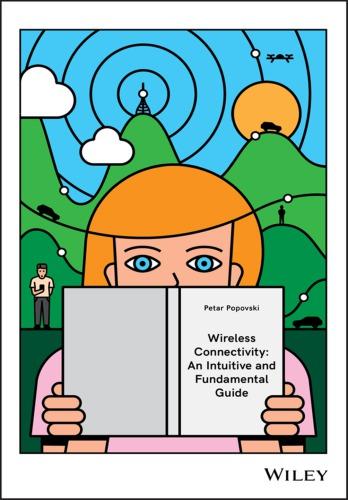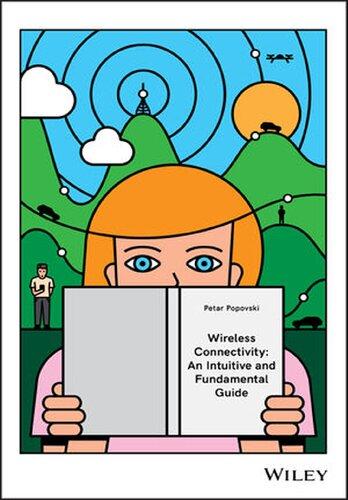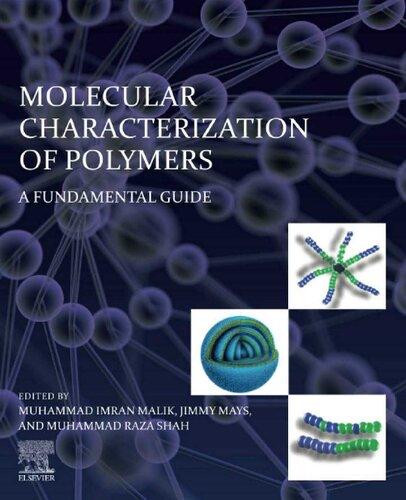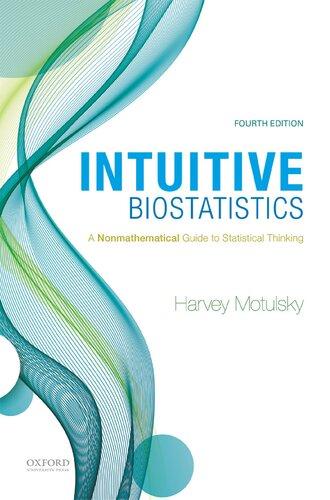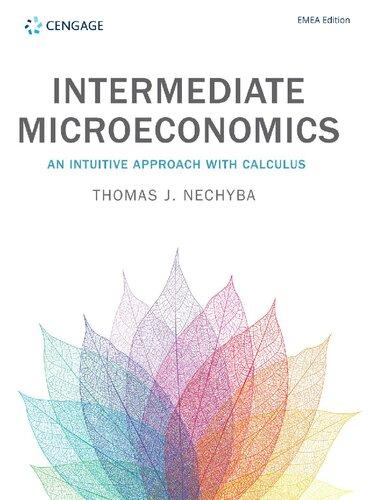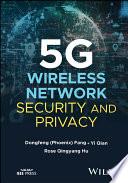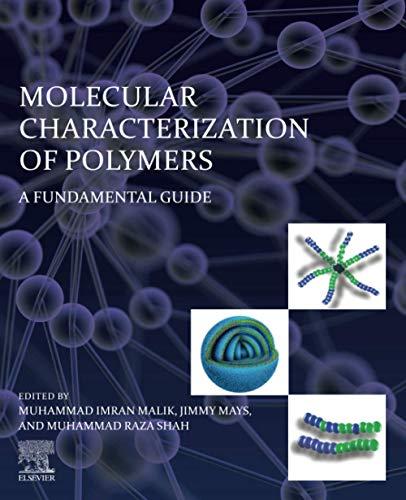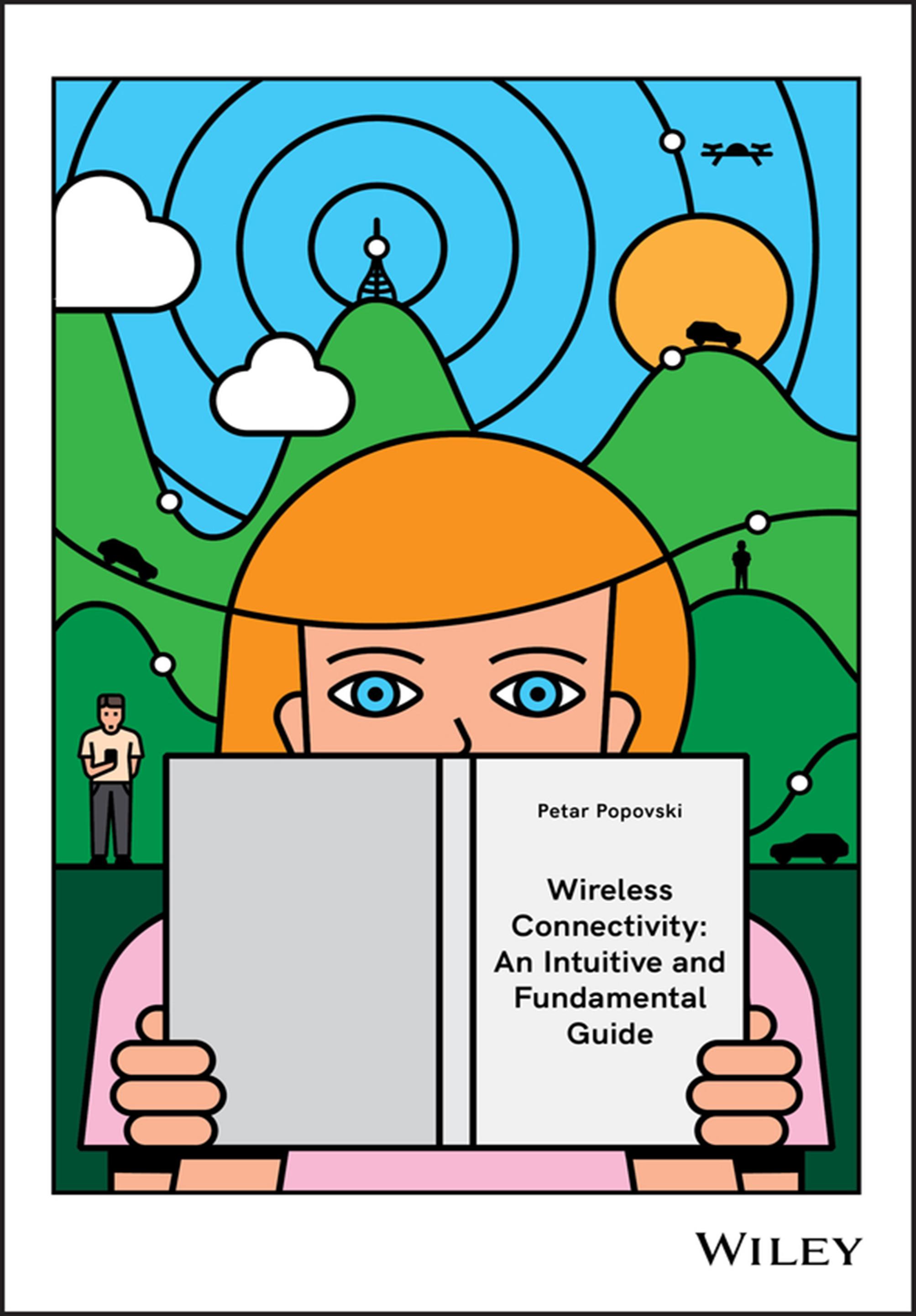WirelessConnectivity
AnIntuitiveandFundamentalGuide
PetarPopovski DepartmentofElectronicSystems AalborgUniversity,Denmark
Thiseditionfirstpublished2020 ©2020JohnWiley&SonsLtd
Allrightsreserved.Nopartofthispublicationmaybereproduced,storedinaretrievalsystem,or transmitted,inanyformorbyanymeans,electronic,mechanical,photocopying,recordingorotherwise, exceptaspermittedbylaw.Adviceonhowtoobtainpermissiontoreusematerialfromthistitleisavailable athttp//www.wiley.com/go/permissions.
TherightofPetarPopovskitobeidentifiedastheauthorofthisworkhasbeenassertedinaccordance withlaw.
RegisteredOffices
JohnWiley&Sons,Inc.,111RiverStreet,Hoboken,NJ07030,USA
JohnWiley&SonsLtd,TheAtrium,SouthernGate,Chichester,WestSussex,PO198SQ,UK
EditorialOffice
TheAtrium,SouthernGate,Chichester,WestSussex,PO198SQ,UK
Fordetailsofourglobaleditorialoffices,customerservices,andmoreinformationaboutWileyproducts visitusatwww.wiley.com.
Wileyalsopublishesitsbooksinavarietyofelectronicformatsandbyprint-on-demand.Somecontentthat appearsinstandardprintversionsofthisbookmaynotbeavailableinotherformats.
LimitofLiability/DisclaimerofWarranty
Whilethepublisherandauthorshaveusedtheirbesteffortsinpreparingthiswork,theymakeno representationsorwarrantieswithrespecttotheaccuracyorcompletenessofthecontentsofthisworkand specificallydisclaimallwarranties,includingwithoutlimitationanyimpliedwarrantiesofmerchantability orfitnessforaparticularpurpose.Nowarrantymaybecreatedorextendedbysalesrepresentatives,written salesmaterialsorpromotionalstatementsforthiswork.Thefactthatanorganization,website,orproduct isreferredtointhisworkasacitationand/orpotentialsourceoffurtherinformationdoesnotmeanthat thepublisherandauthorsendorsetheinformationorservicestheorganization,website,orproductmay provideorrecommendationsitmaymake.Thisworkissoldwiththeunderstandingthatthepublisheris notengagedinrenderingprofessionalservices.Theadviceandstrategiescontainedhereinmaynotbe suitableforyoursituation.Youshouldconsultwithaspecialistwhereappropriate.Further,readersshould beawarethatwebsiteslistedinthisworkmayhavechangedordisappearedbetweenwhenthisworkwas writtenandwhenitisread.Neitherthepublishernorauthorsshallbeliableforanylossofprofitorany othercommercialdamages,includingbutnotlimitedtospecial,incidental,consequential,orother damages.
LibraryofCongressCataloging-in-PublicationDataappliedfor
HBISBN:9780470683996
CoverDesign&Image:©PeterGregson
Setin9.5/12.5ptSTIXTwoTextbySPiGlobal,Chennai,India 10987654321
Inmemoryofmyfather,theunshakeableoptimist.
Contents
Foreword xv
Acknowledgments xix
Acronyms xxi
1AnEasyIntroductiontotheSharedWirelessMedium 3
1.1HowtoBuildaSimpleModelforWirelessCommunication 4
1.1.1WhichFeaturesWeWantfromtheModel 4
1.1.2CommunicationChannelwithCollisions 4
1.1.3Trade-offsintheCollisionModel 7
1.2TheFirstContact 9
1.2.1HierarchyHelpstoEstablishContact 9
1.2.2WirelessRendezvouswithoutHelp 11
1.2.3RendezvouswithFull-DuplexDevices 12
1.3MultipleAccesswithCentralizedControl 12
1.3.1AFrameforTimeDivision 13
1.3.2FrameHeaderforFlexibleTimeDivision 14
1.3.3ASimpleTwo-WaySystemthatWorksUndertheCollisionModel 15
1.3.4StillNotaPracticalTDMASystem 18
1.4MakingTDMADynamic 19
1.4.1Circuit-SwitchedversusPacket-SwitchedOperation 19
1.4.2DynamicAllocationofResourcestoUsers 20
1.4.3ShortControlPacketsandtheIdeaofReservation 22
1.4.4Half-DuplexversusFull-DuplexinTDMA 24
1.5ChapterSummary 25
1.6FurtherReading 25
1.7ProblemsandReflections 26
2RandomAccess:HowtoTalkinCrowdedDarkRoom 29
2.1FramedALOHA 30
2.1.1RandomizationthatMaximizestheALOHAThroughput 32
2.2Probing 35
2.2.1CombiningALOHAandProbing 39
2.3CarrierSensing 39
2.3.1RandomizationandSpectrumSharing 39
2.3.2AnIdleSlotisCheap 41
2.3.3FeedbacktotheTransmitter 43
2.4RandomAccessandMultipleHops 45
2.4.1UseofReservationPacketsinMulti-Hop 47
2.4.2MultipleHopsandFull-Duplex 47
2.5ChapterSummary 48
2.6FurtherReading 48
2.7ProblemsandReflections 48
3AccessBeyondtheCollisionModel 53
3.1DistanceGetsintotheModel 53
3.1.1CommunicationDegradesastheDistanceIncreases 53
3.1.2HowtoMaketheResultofaCollisionDependentontheDistance 55
3.2SimplifiedDistanceDependence:ADoubleDiskModel 57
3.3DownlinkCommunicationwiththeDoubleDiskModel 58
3.3.1ACautiousExampleofaDesignthatReachestheLimitsoftheModel 61
3.4UplinkCommunicationwiththeDoubleDiskModel 62
3.4.1UplinkthatUsesMulti-PacketReception 64
3.4.2BufferedCollisionsforFutureUse 64
3.4.3ProtocolsthatUsePacketFractions 66
3.5UnwrappingthePackets 68
3.6ChapterSummary 69
3.7FurtherReading 70
3.8ProblemsandReflections 70
4TheNetworkingCake:LayeringandSlicing 75
4.1LayeringforaOne-WayLink 75
4.1.1ModulesandtheirInterconnection 75
4.1.2ThreeImportantConceptsinLayering 77
4.1.3AnExampleofaTwo-LayerSystem 78
4.2LayersandCross-Layer 79
4.3ReliableandUnreliableServicefromaLayer 81
4.4BlackBoxFunctionalityforDifferentCommunicationModels 84
4.5StandardLayeringModels 86
4.5.1ConnectionversusConnectionless 87
4.5.2FunctionalityoftheStandardLayers 88
4.5.3AVeryBriefLookattheNetworkLayer 89
4.6AnAlternativeWirelessLayering 91
4.7Cross-LayerDesignforMultipleHops 92
4.8SlicingoftheWirelessCommunicationResources 94
4.8.1Analog,Digital,Sliced 94
4.8.2APrimeronWirelessSlicing 96
4.8.2.1OrthogonalWirelessSlicing 96
4.8.2.2Non-OrthogonalWirelessSlicing 98
4.9ChapterSummary 100
4.10FurtherReading 100
4.11ProblemsandReflections 100
5PacketsUndertheLookingGlass:SymbolsandNoise 105
5.1Compression,Entropy,andBit 105
5.1.1ObtainingDigitalMessagesbyCompression 106
5.1.2ABitofInformation 106
5.2BasebandModulesoftheCommunicationSystem 107
5.2.1MappingBitstoBasebandSymbolsunderSimplifyingAssumptions 108
5.2.2ChallengingtheSimplifyingAssumptionsabouttheBaseband 109
5.3SignalConstellationsandNoise 110
5.3.1ConstellationPointsandNoiseClouds 110
5.3.2ConstellationswithLimitedAveragePower 113
5.3.3BeyondtheSimpleSetupforSymbolDetection 114
5.3.4Signal-to-NoiseRatio(SNR) 116
5.4FromBitstoSymbols 117
5.4.1BinaryPhaseShiftKeying(BPSK) 117
5.4.2QuaternaryPhaseShiftKeying(QPSK) 118
5.4.3ConstellationsofHigherOrder 119
5.4.4GeneralizedMappingtoManySymbols 122
5.5Symbol-LevelInterferenceModels 123
5.5.1AdvancedTreatmentofCollisionsbasedonaBasebandModel 124
5.6WeakandStrongSignals:NewProtocolPossibilities 126
5.6.1RandomizationofPower 127
5.6.2OtherGoodiesfromtheBasebandModel 129
5.7HowtoSelecttheDataRate 130
5.7.1ASimpleRelationbetweenPacketErrorsandDistance 130
5.7.2AdaptiveModulation 132
5.8SuperpositionofBasebandSymbols 134
5.8.1BroadcastandNon-OrthogonalAccess 135
5.8.2UnequalErrorProtection(UEP) 137
5.9CommunicationwithUnknownChannelCoefficients 138
5.10ChapterSummary 141
5.11FurtherReading 142
5.12ProblemsandReflections 142
6AMathematicalViewonaCommunicationChannel 147
6.1AToyExample:ThePigeonCommunicationChannel 147
6.1.1SpecificationofaCommunicationChannel 149
6.1.2ComparisonoftheInformationCarryingCapabilityofMathematical Channels 150
6.1.3AssumptionsandNotations 151
x Contents
6.2AnalogChannelswithGaussianNoise 151
6.2.1GaussianChannel 152
6.2.2OtherAnalogChannelsBasedontheGaussianChannel 152
6.3TheChannelDefinitionDependsonWhoKnowsWhat 154
6.4UsingAnalogtoCreateDigitalCommunicationChannels 158
6.4.1CreatingDigitalChannelsthroughGrayMapping 158
6.4.2CreatingDigitalChannelsthroughSuperposition 161
6.5TransmissionofPacketsoverCommunicationChannels 163
6.5.1LayeringPerspectiveoftheCommunicationChannels 163
6.5.2HowtoObtainThroughputthatisnotZero 164
6.5.3AsynchronousPacketsandTransmissionof“Nothing” 167
6.5.4PacketTransmissionoveraTernaryChannel 169
6.6ChapterSummary 171
6.7FurtherReading 171
6.8ProblemsandReflections 172
7CodingforReliableCommunication 177
7.1SomeCodingIdeasfortheBinarySymmetricChannel 177
7.1.1AChannelBasedonRepetitionCoding 177
7.1.2ChannelBasedonRepetitionCodingwithErasures 179
7.1.3CodingBeyondRepetition 181
7.1.4AnIllustrativeComparisonoftheBSCBasedChannels 182
7.2GeneralizationoftheCodingIdea 183
7.2.1MaximumLikelihood(ML)Decoding 187
7.3LinearBlockCodesfortheBinarySymmetricChannel 188
7.4CodedModulationasaLayeredSubsystem 192
7.5RetransmissionasaSupplementtoCoding 194
7.5.1FullPacketRetransmission 195
7.5.2PartialRetransmissionandIncrementalRedundancy 197
7.6ChapterSummary 199
7.7FurtherReading 199
7.8ProblemsandReflections 199
8Information-TheoreticViewonWirelessChannelCapacity 203
8.1ItStartswiththeLawofLargeNumbers 203
8.2AUsefulDigressionintoSourceCoding 204
8.3PerfectlyReliableCommunicationandChannelCapacity 207
8.4MutualInformationandItsInterpretations 209
8.4.1FromaLocaltoaGlobalProperty 209
8.4.2MutualInformationinSomeActualCommunicationSetups 211
8.5TheGaussianChannelandthePopularCapacityFormula 214
8.5.1TheConceptofEntropyinAnalogChannels 214
8.5.2TheMeaningof“Shannon’sCapacityFormula” 215
8.5.3SimultaneousUsageofMultipleGaussianChannels 217
8.6CapacityofFadingChannels 219
8.6.1ChannelStateInformationAvailableattheTransmitter 219
8.6.2Example:WaterFillingforBinaryFading 221
8.6.3WaterFillingforContinuouslyDistributedFading 222
8.6.4FastFadingandFurtherRemarksonChannelKnowledge 223
8.6.5CapacityWhentheTransmitterDoesNotKnowtheChannel 225
8.6.5.1ChannelwithBinaryInputsandBinaryFading 225
8.6.5.2ChannelswithGaussianNoiseandFading 229
8.6.6ChannelEstimationandKnowledge 230
8.7ChapterSummary 232
8.8FurtherReading 233
8.9ProblemsandReflections 233
9TimeandFrequencyinWirelessCommunications 237
9.1ReliableCommunicationRequiresTransmissionofDiscreteValues 237
9.2CommunicationThroughaWaveform:AnExample 239
9.3EntertheFrequency 242
9.3.1InfinitelyLongSignalsandTrueFrequency 242
9.3.2BandwidthandTime-LimitedSignals 245
9.3.3ParallelCommunicationChannels 247
9.3.4HowFrequencyAffectstheNotionofMultipleAccess 248
9.4NoiseandInterference 250
9.4.1SignalPowerandGaussianWhiteNoise 250
9.4.2InterferencebetweenNon-OrthogonalFrequencies 252
9.5PowerSpectrumandFourierTransform 255
9.6FrequencyChannels,Finally 258
9.6.1CapacityofaBandlimitedChannel 259
9.6.2CapacityandOFDMTransmission 261
9.6.3FrequencyforMultipleAccessandDuplexing 261
9.7CodeDivisionandSpreadSpectrum 263
9.7.1SharingSynchronizedResourceswithOrthogonalCodes 263
9.7.2WhyGoThroughtheTroubleofSpreading? 265
9.7.3MimickingtheNoiseandCovertCommunication 268
9.7.4RelationtoRandomAccess 269
9.8ChapterSummary 270
9.9FurtherReading 270
9.10ProblemsandReflections 270
10SpaceinWirelessCommunications 275
10.1CommunicationRangeandCoverageArea 276
10.2TheMythaboutFrequenciesthatPropagateBadlyinFreeSpace 278
10.3TheWorldViewofanAntenna 280
10.3.1AntennaDirectivity 280
10.3.2DirectivityChangestheCommunicationModels 282
10.4MultipathandShadowing:SpaceisRarelyFree 283
10.5TheFinalMissingLinkintheLayeringModel 286
10.6TheTime-FrequencyDynamicsoftheRadioChannel 288
10.6.1HowaTime-InvariantChannelDistortstheReceivedSignal 288
10.6.2FrequencySelectivity,Multiplexing,andDiversity 291
10.6.3Time-VariantChannelIntroducesNewFrequencies 292
10.6.4CombinedTime-FrequencyDynamics 295
10.7TwoIdeastoDealwithMultipathPropagationandDelaySpread 296
10.7.1TheWidebandIdea:SpreadSpectrumandaRAKEReceiver 297
10.7.2TheNarrowbandIdea:OFDMandaGuardInterval 299
10.8StatisticalModelingofWirelessChannels 300
10.8.1FadingModels:RayleighandSomeOthers 301
10.8.2RandomnessinthePathLoss 303
10.9ReciprocityandHowtoUseIt 303
10.10ChapterSummary 305
10.11FurtherReading 305
10.12ProblemsandReflections 305
11UsingTwo,More,oraMassiveNumberofAntennas 309
11.1AssumptionsabouttheChannelModelandtheAntennas 310
11.2ReceivingorTransmittingwithaTwo-AntennaDevice 311
11.2.1ReceiverwithTwoAntennas 311
11.2.2UsingTwoAntennasataKnowledgeableTransmitter 313
11.2.3TransmitDiversity 314
11.3IntroducingMIMO 315
11.3.1SpatialMultiplexing 317
11.4MultipleAntennasforSpatialDivisionofMultipleUsers 319
11.4.1DigitalInterference-FreeBeams:ZeroForcing 320
11.4.2OtherSchemesforPrecodingandDigitalBeamforming 322
11.5BeamformingandSpectrumSharing 325
11.6WhatIftheNumberofAntennasisScaledMassively? 327
11.6.1TheBaseStationKnowstheChannelsPerfectly 328
11.6.2TheBaseStationhastoLearntheChannels 329
11.7ChapterSummary 331
11.8FurtherReading 331
11.9ProblemsandReflections 331
12WirelessBeyondaLink:ConnectionsandNetworks 335
12.1WirelessConnectionswithDifferentFlavors 335
12.1.1CoarseClassificationoftheWirelessConnections 335
12.1.2TheComplex,MultidimensionalWorldofWirelessConnectivity 337
12.2FundamentalIdeasforProvidingWirelessCoverage 339
12.2.1StaticorMovingInfrastructure 340
12.2.2CellsandaCellularNetwork 341
12.2.3SpatialReuse 343
12.2.4CellsComeinDifferentSizes 345
12.2.5Two-WayCoverageandDecoupledAccess 347
12.3NoCellisanIsland 348
12.3.1WiredandWirelessBackhaul 348
12.3.2WirelessOne-WayRelayingandtheHalf-DuplexLoss 349
12.3.3WirelessTwo-WayRelaying:ReclaimingtheHalf-DuplexLoss 351
12.4CooperationandCoordination 355
12.4.1ArtificialMultipath:TreatingtheBSasYetAnotherAntenna 355
12.4.2DistributingandNetworkingtheMIMOConcept 357
12.4.3CooperationThroughaWirelessBackhaul 359
12.5DissolvingtheCellsintoCloudsandFog 360
12.5.1TheUnattainableIdealCoverage 360
12.5.2TheBackhaulLinksMustHaveaFiniteCapacity 362
12.5.3NoisyCooperationwithaFiniteBackhaul 363
12.5.4AccessThroughCloudsandFog 364
12.6CopingwithExternalInterferenceandOtherQuestionsabouttheRadio Spectrum 366
12.6.1ObliviousRatherThanSelfish 366
12.6.2LicensetoControlInterference 367
12.6.3SpectrumSharingandCaring 369
12.6.4DutyCycling,Sensing,andHopping 371
12.6.5BeyondtheLicensedandUnlicensedandSomeFinalWords 372
12.7ChapterSummary 374
12.8FurtherReading 374
12.9ProblemsandReflections 375
Bibliography 377
Index 381
Foreword
First:But,Why?
Whyshouldonedaretowritearelativelylongbookinadigitalage,whereeverythingseems tobequicklyfoundonlineandwatchingvideotutorialsisusedasasubstituteforreading? Whyread,letalonewrite,alongtextwhenasingletweetresultsinthousandsofworkers gettinglaidofforsomebodybecomingamillionaireinaday?And,last,butnotleast,why putinsomucheffort,knowingthat,eventually,despiteallthemeasures,thePDFofthe bookwillbeavailableforillegaldownloadataphonywebsite?
Abookoratextbookstillhasitsroleinthedigitalage,butthisroleissignificantlydifferent fromthetimeswhenbooksweretheultimatesourceofinformationandknowledge.It shouldratherbeunderstoodasagatewaytoknowledge,agadgetthathelpstomakesenseof themassiveamountofonlinedata,ahitchhiker’sguideforreceiving,filtering,andlearning fromtheoverwhelmingwavesofinformation.Asfortheillegalcopies:ifyouarereading thisonanillegalcopy,thenitisfairtotellyouthatitisgettingreallyboringfromnowon, soyoucanstopreading.:)
WirelessbecameHugeandComplex
Thisroleofa“gatewaytoknowledge”wasoneofthemotivationsbehindwritingthis book.Theareaofwirelesscommunicationshasdevelopedimmenselyoverthelastthree decades,generatingalargenumberofconcepts,ideas,articles,patents,andevenmyths. Identifyingthecrucialideasandtheirinterconnectionbecomesincreasinglydifficult.The areaofwirelessconnectivitygrewtobeverycomplex,tothelevelwherethespecialists workinginonepartofthesystem,sayhardware,didnotknowmuchaboutthefunctioning ofthehighlayerprotocols,andviceversa.Intheextremecase,thisignoranceabout theconceptsandfunctioningoftheotherpartsofthecommunicationsystemledto the“only-my-part-of-the-system-matters”attitude,sometimesresultingindisastrously sub-optimaldesigns.
Inordertoseehowmuchwirelesscommunicationhasdevelopedinvolumeand complexity,hereisanultra-shortoverviewofthegenerationsofwirelessmobilecommunicationsystems.Itstartedwiththe“modest”ambitionof2Gbeingreachablefora phonecallwhereveryouaremoving,buttheunlikelyherowastheshortmessageservice (SMS)thatbroughttextingasanewsocialphenomenon.Itwasperhapsthisunlikelyhero thatplantedtheobsessionwiththe“killerapplication”duringthedevelopmentof3G. Theadventofthesmartphonehasshownthattherewasnotasinglekillerapplication,
butagatewaytotheinternet,agadgetwithmanyapps,ahitchhiker’sguidetomultiple applications[sic].Onlywiththedataspeedsofferedby4Gdidthesmartphonestartto reachitsfullpotential,completelytransformingworkandplay.Atthetimeofwriting,we areatthedawnofthedeploymentof5G,stillwithalotofpredictions,enthusiasm,and skepticism.Theworkingversionofthe5Gambitionistooffertrulyubiquitousandreliable coveragetothehumans,butalsowirelesslyconnectmachinesandphysicalobjects.
Notethatthisultra-shortoverviewisunfairtoalotofotherwirelesstechnologiesthatare omnipresentandplayacrucialroleindailylife,suchasWi-FiandBluetooth.Thetonein thebookisleaningtowardsmobilewirelesscellularnetworks,buttheoveralldiscussionis keptgeneric,nottiedtoaparticularwirelesssystemortechnology.
HowthisBookisStructured
Thebookdoesnotfollowtheestablished,linearstructureinwhichonestartsfromthe propagationandchannelsandthenclimbsuptheprotocollayers.Heretheapproachhas beensomewhatnonlinearinanattempttofollowtheintuitionusedwhenonecreatesa newtechnologytosolveacertainproblem.Withthisapproach,westateaproblemfrom therealworldandcreateamodelthatreflectsthefeaturesoftheproblem.Themodelis asimplification,acaricatureofthereality,butaseverygoodcaricature,itcapturesthe essentialfeatures.Acertainmodel(forexample,acollisionmodelofawirelesschannel), allowsthesystemdesignertoproposesolutionsthatresidewithinasubspaceofthespace ofallpossiblesolutionstotherealcommunicationproblem.Byenrichingthemodel(for example,addingacaptureandinterferencecancellationtothecollisionmodel),thesystem designercandevisesolutionsthatgobeyondtheboundariesofthepreviouslymentioned subspace.Practicallyeachnewchapterbringsenrichmentofthemodels,presentingsystem/algorithmdesignsthatextendtheonesdevelopedforthesimplersystemmodels.
Eachchapterstartswithacartoonthatcarriesthemainmessageofthechapter.The narrativeinthebookusescharactersasitfacilitatesthediscussionaboutcommunication betweendifferentparties.Thisisinspiredbythesecurityliterature,whichdealswithAlice, Bob,etc.HereIhavestartedfromtheothersideofthealphabet,whichispopulatedbythe letterscommonlyusedincommunicationtheory.ThecharactersareZoya,Yoshi,Xia,Walt, Victoria(whichhappenstobethenameofmymom)andUmer,and,yes,theyaremore internationalcomparedtoAliceandBob.ThebasestationsarenamedBasilandBastian forobviousreasons.
Amongthereferencesin“furtherreading”,Ihaveinsertedreferencestosomeofthe researchworksco-authoredbyme.Thisisnottoboostmycitationsbyaself-citation(which is,righteously,oftennotcountedintheacademicrecord),butrathertoofferareferencethat showsthatI,theauthor,havemadeanactualresearchcontributiontothearea.Thiscan onlyincreasethecredibilityofwhatiswritteninthechapter.
ObjectivesandTargetAudience
WhenIstartedthebook,theobjectivewastomakeitsuitableforcasualreadinganduse almostnoequations.Inthemeantime,thenumberofequationsincreased,butstillfar belowthenumberinstandardtextbooksonwirelesscommunications,suchthatthereis stillhopethatthereadercanreaditcasually.Yet,thefactthattherearefiveproblemsafter
eachchapterindicatesthatthebookcanalsobeusedasatextbook.However,forindepth reading,thereadershouldrelyontheliteraturein“furtherreading”.
Thetargetaudienceis:
• Studentsinelectronics,communicationandnetworking.Someoftheproblemsattheend ofthechaptersareactuallymini-projects,whichthestudentscandooveranextended time.Thisissuitableforbothgraduateandundergraduatecourses.Clearly,ifusedasa graduatecourse,thenthereismorerelianceonexternalliterature.
• Wirelessengineersthatarespecialistsinoneareawhowanttoknowhowthewhole systemworks,withoutgoingthroughallthedetailandmath.
• Computerscientiststhatwanttounderstandthefundamentalsofwirelessconnectivity, therequirements.and,mostimportantly,thelimitations.
• Aswirelessconnectivitystartstoplayabigroleinalargenumberofcyber-physicalsystems,suchassmartgrids,transport,logisticsorsimilar,theengineersspecializingin thoseareascanobtainaninsightintosomeoftheessentialwirelessconcepts.
• Asasupplementtootherbooksonwirelessconnectivitythatdealwiththedetailofanalysisanddesignofspecifictechnologies.
Acknowledgments
Evenwhenabookhasasingleauthor,alargepartoftheauthorshipgoestothecolleagues, friends,andfamilythatprovidedinspiration,criticism,agentlepushwhenthingslooked impossibleandareminderthatSisyphuswasonlyamythicalcreature.
IamdeeplygratefultoOsvaldoSimeone(King’sCollegeLondon)forenormoussupport duringthepreparationofthisbook.Thecreditfortheideaofusingcartoonsshouldgoto him.HecouldabsolutelyalwaysfindthetimetoreadthechaptersthatIwasaskinghim tocheck,andprovidepromptandrichfeedback.Ihavebeenfortunatetohavehim,an exemplaryeruditeresearcher,asacollaboratorovermanyyears.
Threepeoplestoodoutinencouragingmethroughoutthelongwritingofthebook. JørgenBachAndersen(AalborgUniversity),AngelLozano(PompeuFabraUniversity) andHiroyukiYomo(KansaiUniversity).Jørgenprovidedmewithveryvaluablefeedback onChapter10(SpaceinWirelessCommunications).Angelremovedmydoubtsaboutthe usefulnessofChapter9(TimeandFrequencyinWirelessCommunications).Hiroyuki decidedtousethisasatextbookintheearlystages,whenIpresentedhimwiththebook concept.
IamverythankfulforthefeedbackIgotonspecificchapters.Twomembersofmy researchgroupprovidedmewithfeedbackintheearlystageofwritingandremovedsome ofthedoubtsIhadaboutthestyle. ˇ CedomirStefanovi ´ c(AalborgUniversity)readthefirst chaptersandNunoPratas(nowwithNokia)readChapter6(AMathematicalViewon aCommunicationChannel).AnnaScaglione(ArizonaStateUniversity),EmilBjörnson (LinköpingUniversity)andElisabethdeCarvalho(AalborgUniversity)wereverykindto readChapter11(UsingTwo,More,oraMassiveNumberofAntennas)andprovideme withpromptandusefulfeedback.
Abigthankyougoestothemembersofmyresearchgroup,whohadtobepatientwith myrantsaboutthebookthroughoutalltheseyears.Afteroneofmylecturesforthemaster students,RoccoDiTaranto(nowwithEricsson),atthattimemyPhDstudent,askedme: “WherecanIreadthesetopicsexplainedinawayinwhichyoudiditatthelecture?”.The bookideahadbeencookinginthebackgroundforsometime,butthiswasperhapsthedecisivepushtowriteit.MarkoAngjelichinoski(nowwithDukeUniversity)wasconvinced thatthestyleandthewholebookprojectwereveryoriginalandIneededtohurryup.I wouldliketothankKasperFløeTrillingsgaard(nowwithInCommodities)formanystimulatingdiscussionontheinformation-theoreticaspects.Alexandru-SabinBana(Aalborg University)andRadoslawKotaba(AalborgUniversity)helpedtoprepareacoursebasedon thisbookandspottedseveralerrorsandinconsistencies.Whilethisbookwasinthefinal
xx Acknowledgments
stages,IwasteachingacourseatAalborgUniversityandseveralstudentswerekindto correcterrorsinthechapters:AndreasEngelsenFink,JonasIngerslevChristensen,Taus MortensenRaunholt,JeppeThiellesenandSimonKallehauge.
Thecartoons,thecoverpage,aswellastheclipartusedtomakethefigures,weremadeby PeterGregsonStudiofromNoviSad,Serbia.Thisisateamofimmenselycreativepeople, JovanTrkulja,VelimirAndrejevi ´ candMilanLeti ´ c,whoseideasplayasignificantrolein thefinallookofthebook.IwouldalsoliketothankAleksandarSotirovskiformakingthe firstversionofthecartoonsforsomeofthechapters,butduetoobjectivereasonscould notcontinue.ThankstoKashifMahmood(Telenor)forsuggestingUmerasaPakistani namestartingwith“U”.IwouldalsoliketothanktheteamatWileyforbeingpatientand supportivethroughouttheyears,butespeciallyinthefinalstage:SandraGrayson,Louis Manoharan,AdalfinJayasingh,andTessaEdmonds.
Mybiggestsupportthroughtheseyearscamefrommyfamily:mywifeIskra,mychildren AndrejandErina,aswellasourextendedfamily.Familywasalwaystheretotaketheblame whenIwasperformingpoorlyontimemanagementandplanningofthewriting.Inits mostsevereform,thatblamewasendingwithathreatthatIwasgoingtowritesomething similartothededicationwrittenbyamathematician,whodedicateshisbooktohiswife andchildren“withoutwhomthisbookwouldhavebeencompletedtwoyearsearlier”. Iamobviouslynotdoingitand,instead,Iwanttothankthemforabsolutelyalwaysbeing thereforme.IamhopingthatsomeofthemwillreadthebookandgettoknowwhatIam actuallyworkingwith.Unfortunately,myfatherpassedawaybeforethisbookwasfinished. Iamdedicatingthisbooktohim.
P.P.
Acronyms
ACKAcknowledgement
AFAmplifyandforward
ARQAutomaticretransmissionrequest
ASKAmplitudeshiftkeying
AMCAdaptivemodulationandcoding
AWGNAdditivewhiteGaussiannoise
BBUBasebandprocessingunit
BPSKBinaryphaseshiftkeying
BSBasestation
BSCBinarysymmetricchannel
CDMACodedivisionmultipleaccess
CoMPCoordinatedmultipoint
C-RANCloudradioaccessnetwork
CRCCyclicredundancycheck
CRDSAContentionresolutiondiversityslottedALOHA
CSIChannelstateinformation
CSITChannelstateinformationatthetransmitter
CSMACarriersensingmultipleaccess
D2DDevicetodevice
DBPSKDifferentialbinaryphaseshiftkeying
DoFDegreeoffreedom
EGCEqualgaincombining
FDDFrequencydivisionduplex
FDMAFrequencydivisionmultipleaccess
FECForwarderrorcorrection
GFGaloisfield
GPSGlobalpositioningsystem
HARQHybridautomaticretransmissionrequest
IoTInternetofThings
ISIIntersymbolinterference
LBTListenbeforetalk
LDPCLow-densityparitycheck
LEOLowEarthorbit
Acronyms
LLNLawoflargenumbers
LoSLineofsight
MACMediumaccesscontrol;alsomultipleaccesschannel
MECMobileedgecomputing
MIMOMultipleinputmultipleoutput
MISOMultipleinputsingleoutput
MMSEMinimummeansquarederror
mmWaveMillimeterwave
MPRMulti-packetreception
MRCMaximumratiocombining
NACKNegativeacknowledgement
NOMANon-orthogonalmultipleaccess
OFDMOrthogonalfrequencydivisionmultiplexing
OFDMAOrthogonalfrequencydivisionmultipleaccess
PAMPulseamplitudemodulation
PAPRPeak-to-averagepowerratio
pdfprobabilitydensityfunction
PHYPhysicallayer
PSKPhaseshiftkeying
QAMQuadratureamplitudemodulation
QPSKQuaternaryphaseshiftkeying
RFRadiofrequency
RNCRadionetworkcontroller
RRHRemoteradiohead
SCSelectioncombining
SDMASpacedivisionmultipleaccess
SICSuccessiveinterferencecancellation
SIMOSingleinputmultipleoutput
SINRSignal-to-interference-and-noiseratio
SNRSignal-to-noiseratio
TDDTimedivisionduplex
TDMATimedivisionmultipleaccess
UEPUnequalerrorprotection
UWBUltrawideband
ZFZerororcing
